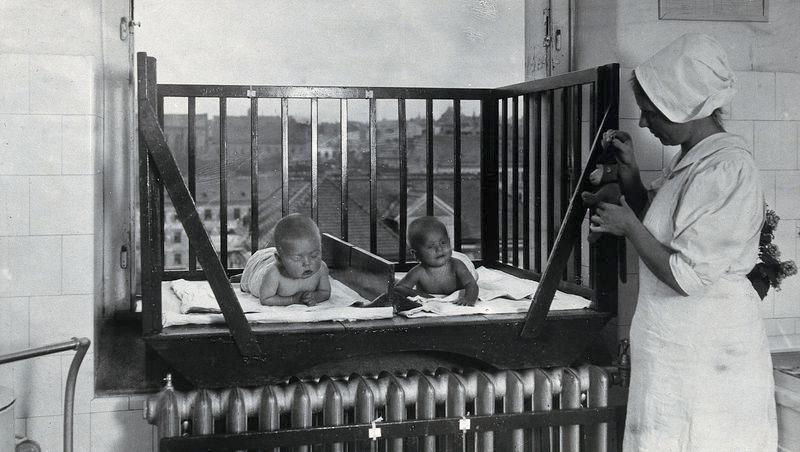Opinion: Population decline is a ticking time bomb

- Oops!Something went wrong.Please try again later.
Ever since Thomas Malthus wrote “An essay on the principles of population” in 1798, much of the world has been convinced that the earth is on a collision course with doom because of overpopulation. This was reenergized in 1968 with the publication of Paul Ehrlich’s book, “The Population Bomb.”
These dire predictions of “overpopulation” never materialized, and increasingly policy experts have come to the conclusion that the actual ticking time bomb looming over mankind is population decline.
It hasn’t hit yet in the United States. But, as a recent Deseret News story said, demographers report the U.S. population is shrinking over time. The fertility rate in 2022 was roughly 1.6 children per 1,000 women, well below the generally accepted population replacement rate of 2.1.
Not only that, the trend is worldwide, especially in developed countries. An editorial in Britain’s The Economist this week noted the world’s fertility rate has gone from 2.7 in 2000 to 2.3 today. The world’s 15 largest economies, including populous China and India, are operating at below replacement levels.
Some people argue this is a good thing; that people will become wealthier and the environment will benefit. The Economist even referenced the failed predictions of Malthus to argue that “human genius” could solve this problem, too.
The truth is, the world has never encountered a sweeping global demographic winter, at least not since the Black Death, and certainly not since the dawn of the Industrial Age. In so many ways, government and business have come to depend on a growing population.
The overwhelming trajectory of human existence, especially in nations that embraced freedom, has been toward prosperity. Humans, it turns out, are the world’s greatest resource, and their ability to continually innovate and invent has led to higher crop yields, greater energy efficiency, vaccines, cures for deadly diseases and a host of labor-saving devices.
Related
In a recent piece on the issue of population decline published by Stanford Business, economics professor Charles I. Jones said, “... the more you look at it, the more you realize, ‘Oh, no, this could be a problem.’”
Either the population continues to grow and living standards rise, or the population shrinks, living standards stagnate and humans eventually disappear, he said. Once fertility descends below the replacement rate, he said, the condition is hard to reverse. In recent decades, governments the world over have sought to reverse declining fertility through various incentives and programs. The results have been mixed at best.
Jones and others point out that a dwindling population would result in less innovation. The Economist describes the brains of younger people as possessing what psychologists call “fluid intelligence,” or the ability to approach problems in creative and unique ways.
Similarly, population growth and the environment is misunderstood, Jones said. “The bulk of history suggests that adding more people has made things better rather than worse,” he said. A good bit of that improvement comes from the competitive nature of the modern economy.
On a practical level, a shrinking population would make it far more difficult to support programs such as Social Security, which already is struggling with a ratio of 2.8 workers for every retiree, down from 42 in 1940, according to the Social Security Administration.
Shrinking economic resources also would make it harder to surmount the growing national debt. It would eventually make it harder to fund military expenses or to acquire expensive, advanced weaponry, jeopardizing national security. Belligerent nations might try to take advantage of this perceived weakness, even if their own economies are shrinking.
These are not immediate problems, but the time to begin addressing them is now. A report to the International Monetary Fund in 2015 outlined some potential strategies, including entitlement and tax reforms. It also mentioned finding policies to enhance birthrates.
That has been a difficult task, so far. As New Zealand’s newshub.com has reported, “Japan, Finland, Italy, Australia, Russia and other nations offer cash for having children.” Certainly pro-family legislation and incentives could help those who might question whether they can financially “afford” children.
In Singapore, the International Monetary Fund reports the government offers “paid maternity leave, child care subsidies, tax relief and rebates, one-time cash gifts, and grants for companies that implement flexible work arrangements.”
And yet, “Despite these efforts, the fertility rate deteriorated from 1.41 in 2001 to a precarious 1.16 in 2018.”
At least these nations recognize the urgency of the problem. A frightening Newsweek headline in April said, “Japan’s Shrinking Population Faces Point of No Return.” The reporting said Masanobu Ogura, Japan’s children’s minister, had announced new proposals representing “a last chance” to reverse the trend.
And if those don’t work?
It’s time for the United States to recognize population decline for the ticking time bomb it is, and in a bipartisan manner. It may take many years for the problem to manifest itself here, but when it does, the time for action may be past.

